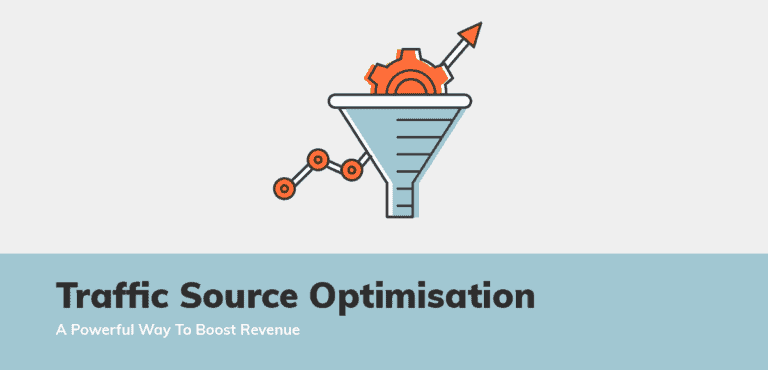In many of my posts, I talk about writing content based on the search intent of that keyword. Writing based on search intent ensures that you satisfy the search query.
If the searcher found the answer they were looking for from your post, they will be satisfied. And if they’re satisfied by the results that Google provides them, they will continue using Google’s search engine.
And we all know why Google wants you to continue using its search engine (hint: it’s the opposite of SEO!)
However, many marketers and SEO professionals do not talk about traffic source optimisation. Traffic source optimisation is a step further after satisfying search intent.
First of all, what is traffic source optimisation?
I first encountered this term by Charles Floate, who mentions that you should optimise your opt-ins or conversions based on the search intent.
Although this is not a new concept, this is the first time I encountered a term for this method. In fact, this is more towards conversion rate optimisation than search engine optimisation. But I believe there’s some intersect between the 2.
Basically, what traffic source optimisation is that you will need to have different conversion goals for different types of content.
This is because when someone visits your website via Google, they come in with different intent (and thus are at the different stages of the marketing funnel).
Marketers must also understand that even though there are high search volumes for a specific keyword, doesn’t mean it will be of value to you.
Similar to Charles’ example, if an SEO provider ranks for the term “SEO”, he/she will be getting loads of traffic from that keyword.
However, the intent of the keyword “SEO” is unclear.
It could mean
- People looking to learn about SEO
- People looking for content around SEO
- People who don’t know what SEO is
- Anything and everything with regards to SEO
Therefore, the majority of the visitors to the SEO provider’s website are basically worthless because they won’t engage his services.
However, if the SEO provider ranked for the term “SEO services“, then it’s clearer that the intent behind this keyword is to look for SEO services.
Ranking for this keyword will be highly beneficial for the SEO professional as searchers are already looking for the various SEO service providers and are potentially ready to engage his services!
How do I optimise my traffic sources?
Well, if you’re looking to do traffic source optimisation, you will need to first understand the search intent behind every keyword that you’re ranking highly for.
This will provide the basis for what you’ll need to do next.
After doing so, you will want to prioritise the high-traffic pages where you’re getting the most visitors.
With this, you will then need to determine what sort of conversions will suit the search intent.
For example, in my anchor text article, it is evident that the intent behind the keyword is informational – that is readers want to know more about anchor texts.
Therefore, for that page itself, I should cater my conversions to this search intent in order for me to optimise this traffic source.
So instead of having a general opt-in asking readers to join my SEO Telegram Channel, I could instead create a template for users to analyse both their website and their competitor’s anchor text ratios. This acts as a lead magnet in exchange for their emails (a conversion).
Another example is my review of Frase.io. There is commercial intent behind this keyword as readers are looking for reassurance that Frase.io is the right choice for them.
To do traffic source optimisation for this page, I could contact the guys at Frase.io for an exclusive discount and offer it to my readers. This will entice readers and incentivise them to take action.
Types of Conversions
With the above examples, you now understand that different consumers are always at different stages of the marketing funnel. To nurture these readers into customers, you’ll need to do some traffic source optimisation to keep them engaged with your brand.
Now, you might be interested to understand what are some conversions you can use for your website. Here’s a non-conclusive list you can use to generate some ideas.
- Templates (for informational intent)
- Checklists (for informational intent)
- PDFS (for informational intent)
- Email opt-ins (for informational intent)
- Webinar (for commercial intent)
- Strategy calls (for commercial/transactional intent)
- Lead forms (for commercial/transactional intent)
- Scheduling meeting (for commercial/transactional intent)
- Sales (for transactional intent)
Similar to anything and everything in online marketing, remember to test your conversions. Because you’ll never know whether your readers prefer templates or checklists until you get actual data from them!
Conclusion
With the illustrations provided above, it’s clear that traffic source optimisation is a powerful method to improve your conversion rates. Be it more email opt-ins or affiliate purchases, customising the conversion for each keyword can easily boost your revenues.
Start by auditing all your keywords and traffic sources. Determine the right search intent and create conversions especially for it. Trust me, your conversion rates will skyrocket and you’ll have no one to thank but yourself!
Let me know in the comments below what you think of this method.




